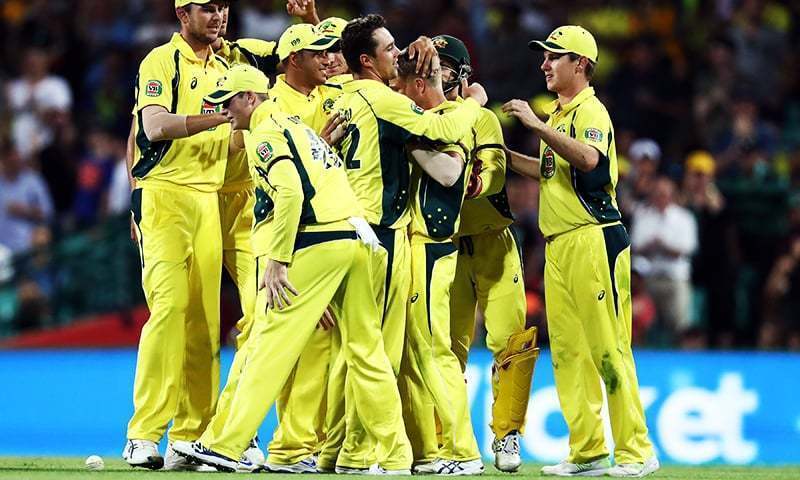KARACHI: One of the most intriguing World Cup matchups over the years have been the one between Australia and India. And even though Australia comfortably lead the head-to-head ratio 8-3, the Indians had their moments of glory, notably when they cornered Ricky Ponting’s side in the Ahmedabad quarter-final on their way to clinching the 2011 World Cup title.
These two nations didn’t face each other in the first two editions in 1975 and 1979 because they were placed in different groups and England hosted the third successive World Cup in 1983, the honours were shared with both Australia and India winning once in the double round-robin tournament where every side played each of their opponents twice at the group stage.
That year Australia failed even to reach the semi-finals but India not only made the knockout phase for the first time but stunned the cricketing world by lifting their maiden World Cup trophy.
Out of Australia’s eight victories as many as seven were achieved when batting first and those two were by the narrowest margin of one run. The first was during the 1987 competition fixture in Chennai — the same venue where a year earlier these teams had been involved in only the second tied Test — when Steve Waugh cleaned up last man Maninder Singh — who incredibly enough was also the last wicket to fall in that Chennai Test — with the final delivery.
The other single-run decider took place at the Gabba in Brisbane in the 1992 World Cup. Australia made 237-9 in their 50 overs but rains arrived in the mid-innings break to force a revised target for the Indians, who now had to chase 236 from 47 overs according to the controversial playing conditions which were in operation then.
Despite captain Mohammad Azharuddin scoring a fluent 93, wickets fell at regular intervals before Australia finally nailed India by getting last two batsmen — Manoj Prabhakar and Venkatapthy Raju — run out on the final two balls of the game.
Australia, who were defending their crown in 2003 World Cup when South Africa co-hosted the event with Zimbabwe and Kenya, ran out comprehensive winners against India both in the pool fixture and the final itself.
The much-hyped Indian batting line-up was dismantled for 125 by the pace and swing of Brett Lee and Jason Gillespie at the SuperSport Park in Centurion before the Aussies knocked off the runs with ease to romp home by nine wickets.
The final at the Wanderers in Johannesburg was virtually reduced to a no-contest by Ponting’s magnificent 121-ball 140 — which still remains the highest individual score in a World Cup final — as the Australian captain shared an unbroken partnership of 234 with Damien Martyn (88) as the holders amassed 359-2.
India’s chase fizzled out rather meekly in the 40th over for 234 despite Virender Sehwag blasting an 81-ball 82 at the top. Glenn McGrath (3) and Lee (2) were the main wicket-takers with Andre Symonds chipping in with a brace as well.
Australia, who overall enjoy a 77-49 winning advantage against India, handed another demoralising defeat on India by 95 runs in the semi-final in Sydney en route to winning the 2015 World Cup. Steve Smith’s 103 from 93 balls enabled the tournament’s co-hosts to 328-7 before India capitulated for 233.
Head-to-head summary
June 13, 1983 — Trent Bridge, Australia won by 162 runs
June 20, 1983 — Chelmsford, India by 118 runs
Oct 9, 1987 — Chennai, Australia won by one run
Oct 22, 1987 — Delhi, India won by 56 runs
March 1, 1992 —Brisbane, Australia won by one run
Feb 27, 1996 — Mumbai, Australia won by 16 runs
June 4, 1999 — The Oval, Australia won by 77 runs
Feb 15, 2003 — Centurion, Australia won by nine wickets
March 23, 2003 — Johannesburg, Australia won by 125 runs
March 24, 2011 — Ahmedabad, India won by five wickets
March 26, 2015 —Sydney, Australia won by 95 runs.
Published in Dawn, June 9th, 2019















































